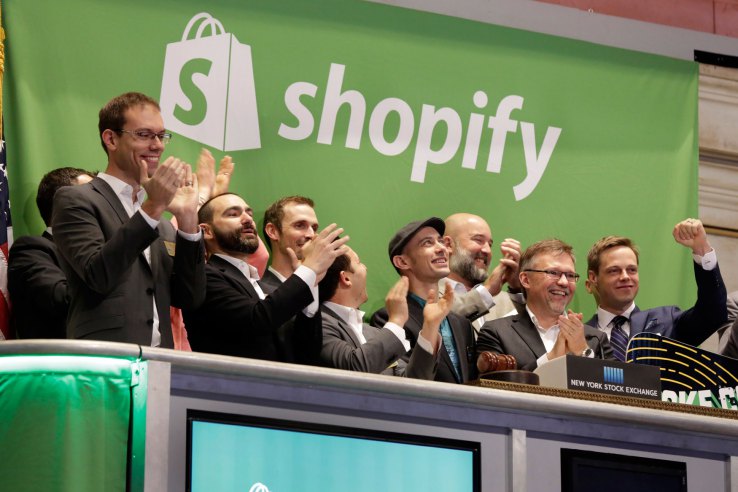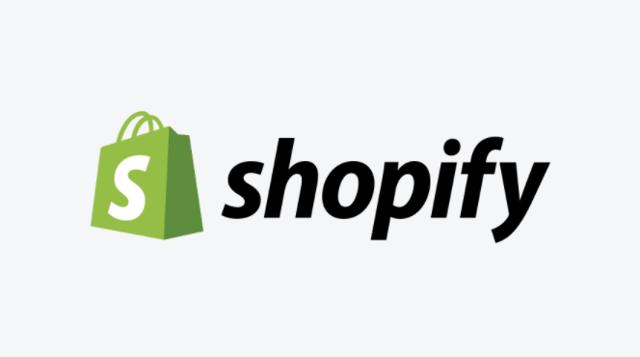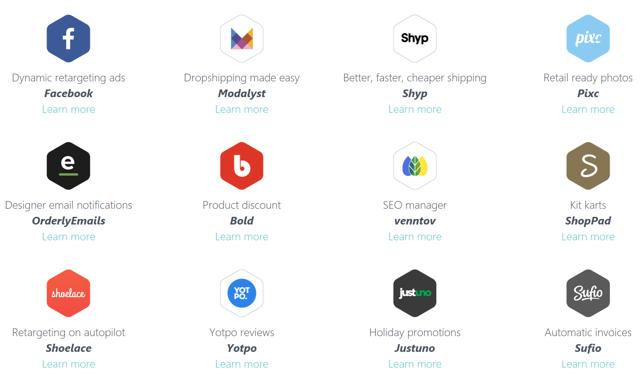
Shopify: Cash Is Cash, M&A Is Upside
From Seeking Alpha Blog
Summary:
- Shopify is now flush with cash with over $900 million. We only value the cash as cash. If the company makes more acquisitions like Kit, it could be worth much more.
- We expect 10% long-term annual returns on our money. At a 10% discount rate, our fair value is adjusted to $90/share from $91/share post equity raise.
- Other investors with access to cheaper money or with lower expectations for long-term returns could calculate a higher fair value than us.
- With an 8-9% discount rate, our model yields a share price between $109 and $136.
With Shopify’s (NYSE:SHOP) 2nd Annual Shareholder meeting earlier this week and the recent run-up of the stock post equity raise, we want to revisit our fair value DCF. Currently, shares are trading at around $97. Not long ago on May 19, we posted an article “Shopify: Cheap Or Expensive?” arguing a fair value of $91/share.
Since we posted the article, we have a little bit of new information that should affect our fair value: the closing of the equity raise, and Kit CRM being offered to all merchants for free.
We are not changing our expectations for the growth prospects from an organic/internal growth perspective. However, Shopify is now flush with cash. What the company ends up using the $957 million for will impact our fair value. But, for now, we can only value it as cash.
To jump ahead to the conclusion, our fair value gets adjusted down to $90/share after the equity raise using our 10% discount rate. Other investors with access to cheaper money or with lower expectations for long-term returns could calculate a higher fair value than us. At a discount rate of 8-9%, our fair value calculation moves up to $109-136/share. Also, we see a scenario where Kit could be worth $4/share above our fair value.
A Quick Word on The Annual Shareholder Meeting
We were hoping for more from the live webcast, but it was disconnected after the shareholder voting. All items were passed.
But given there was a “packed house”, as indicated at the start of the meeting, we expect there were some post-meeting stories that could have built up some additional color around the business prospects. Next year, we may need to fly out to Ottawa to take part.
The webcast was streamed live on YouTube and peaked to a mere 61 viewers, by our recollection.
Kit CRM is now free for all merchants
Kit is a virtual employee that enables merchants to focus on their business. It finds customers by creating marketing campaigns on Facebook and other advertising channels. According to Tech Crunch, the core marketing features of Kit will be free for merchants, while nearly 20 skills will be available for merchants to upgrade. The skills are third-party apps which are compatible with Kit’s AI interface. These other skills can ask customers to write product reviews, create holiday promotions, automate invoices, manage SEO and more.
(Source: Kit)
Kit’s revenue model becomes two-fold. First, increase sales for all merchants with the free core marketing features, thereby increasing Gross Merchandise Volume (GMV) and Merchant Solutions revenue.
The second is to increase Shopify App Store revenue when merchants add skills. These skills are third-party apps which charge both one-time and monthly subscriptions. Shopify makes 20% of the app price, increasing Subscription Solutions revenue. We estimate the average monthly subscription per app is $30, though some advanced options can go for over $699 per month.
Kit was previously offered for $10-25 per month for the core features. We believe with the exposure to a wider audience, it gains the potential to more than justify the loss of revenue.
The additional benefit that is less apparent and harder to quantify is the potential to drive new merchants onto Shopify.
Shopify acquired Kit in April 2016 for $8.25 million. Kit is a service that is only available to Shopify merchants. Now that it’s free, more small businesses that can’t afford to hire someone to do marketing may consider using Shopify. On top of this, many new merchants may fail because they don’t know how to get their first customers. Kit will be their first employee and help them find their first customers, potentially reducing merchant churn.
Shopify is investing in merchant success, especially new merchant success. Keeping new merchants on the platform and showing them how to be successful is how it will be successful. It builds on the brand that Shopify is viewed as a platform that is easy to use, where merchants can make more money than the alternative.
Imagine being a new merchant that used Kit to successfully make sales. If you saw a good return on your advertising investment, you would be much more likely to pay for another skill that could help your business grow even more. Shopify has completely removed the barrier for new business owners to get their business off the ground.
How Can Shopify Breakeven When Kit Is Free
Shopify says Kit is already enjoying strong adoption, with 800% growth in adoption since it came in-house. If we assume the company paid 10x revenue for Kit, we estimate Shopify has about 10% of its merchants paying for Kit. For reference, at the time of acquisition, we calculate Shopify was trading around 8x its guidance revenue for 2016.
Hypothetically, let’s say 10% of Shopify merchants pay on average $15 per month to use Kit and 10% of those Kit users paid $30 per month for additional skill apps. To break even in the first year, 26% of Shopify merchants would need to buy skills app upgrades at $30 per month.
The improvement in GMV for all merchants and any improvement to net new merchant additions (and reduced churn) is all upside.
The Type Of Acquisitions Shopify Needs To Make
Could Kit’s business model change drive faster growth and a higher share price?
We calculate that for Kit to drive an incremental 2.5% higher subscription solutions revenue every year in our model, it would need to see 50% of merchants upgrade to a skill that costs $30/month. Without accounting for any merchant acquisition synergies or GMV growth, this 2.5% subscription revenue increase would be worth $4/share in our model.
Considering that Kit was acquired for $8.25 million just over a year ago, in this scenario, if it can add $4/share in value to Shopify, that would value it at an incremental $400 million.
But, we cannot assign this incremental value to Shopify just yet. Kit needs to show that this new business model will be able to capture 5 times more merchants than before.
In future earnings releases, we will be looking for the following:
- Acceleration of GMV transacted on the platform and any attribution to Kit;
- Increasing merchant acquisition;
- Decreasing merchant churn; and
- Any data points of Kit’s success, from usage to upgrades.
Shopify will likely not provide us any of this data specifically, but any indications would be helpful.
These are the types of businesses we hope the company will invest its $957 million in. These are businesses that currently have a small customer base, but when exposed to Shopify’s 400,000 and growing merchants, can be worth multiples more over time.
Current Market Price Versus Our Fair Value
Since we published our fair value of Shopify at $91/shares on May 19, the company has closed its equity raise, adding 6.325 million shares and collecting net proceeds of $561 million. From the prospectus, the total shares outstanding on May 15, 2017, were given at 91.7 million. Adding the 6.325 million shares gives us a total of 98.05 million shares outstanding. With cash at the end of 1Q17 of $395.7 million, we estimate current cash at $957 million.
Making these changes reduces our fair value to $90/share, or 7% below the current market price.
Some might say the market is not efficient. But we know it is the nature of markets to be inefficient in the short term. In the long term, markets tend to follow the fundamentals.
How far can Shopify go? Our terminal growth after 10 years: 3%
Our discount rate is our expectation of return for our money in the long run. Some investors have a much lower expectation of return for their money. We are expecting 10%.
A 9% discount rate would put the fair value at $109/share and 8% would put it at $136/share. So we can see how the stock price could move up from our fair value just by investors with cheaper money or lower return expectations getting into the stock.
In a previous article, we outlined our full 10-year forecast.
Conclusion
Shopify acquired Kit CRM a year ago, and it just announced it is going to offer the core features to all merchants for free. We think this is a huge opportunity and a big win for new merchants. If this gambit works and Shopify can get 50% of its merchants to pay for upgraded features, we could see a 2.5% upside to subscription revenues. This scenario could add $4/share to the stock price. But it is still early days, so we have not priced this into our fair value.
To us, Shopify is trading 7% above our fair value. But we are long-term shareholders, so we are not selling at this small premium. We believe there are investors with lower costs of capital and lower expectations for long-term returns than us. We expect 10% return on our money in the long term. If other investors of Shopify expect 8-9% return on their money, the fair value of the stock goes from our $90/share up to $109-136/share.
One More Thing
Shopify potentially could be added to the S&P/TSX Composite Index. In a previous article, we went into more detail on this. Based on our calculations, the company should meet the liquidity requirements to be included in the index. Regardless of whether Shopify is added to the index or not, we are expecting a press release to announce all the other additions and deletions on Friday, June 9 (usually aftermarket).
If you like our insight, please consider following us.
Disclosure: I am/we are long SHOP.
I wrote this article myself, and it expresses my own opinions. I am not receiving compensation for it (other than from Seeking Alpha). I have no business relationship with any company whose stock is mentioned in this article.







